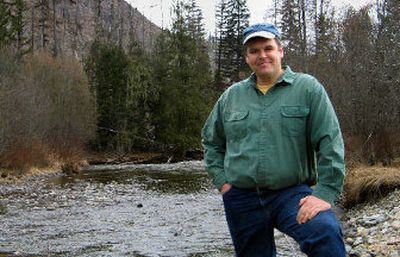A powerful protector

NOXON, Mont. – Water bubbles along in a remote creek near a Montana wilderness. Children play in a city park during a spring afternoon. Fishermen drop bait into a well-known pike hole.
Why should any of this matter to Spokane businesses? Because the stable, affordable supply of electricity that keeps city commerce humming comes straight from the pristine and protected waters of western Montana.
Ensuring this relationship stays healthy is Avista Corp., whose utility division has struck a partnership with regulators, sportsmen and locals to protect its rights to make electricity from the Clark Fork River. The group is working to protect endangered bull trout and provide outdoor recreation opportunities.
The effort has earned praise and, for seven years running, an award from the National Hydropower Association for “outstanding stewardship of America’s rivers.” Avista is proud of the achievement and says its work in Montana can be a model for the difficult relicensing process under way for its Spokane River dams.
In the northwest corner of Montana, Avista partnered with The Conservation Fund, the Montana Dept. of Fish Wildlife and Parks, Plum Creek Timber Co. and the U.S. Fish and Wildlife Service. Together they set aside more than 1,800 acres of river habitat, most of which was owned by Seattle-based timber firm Plum Creek.
About 500 acres was purchased by the Spokane utility as conservation easement. The company’s experts in the field are so serious about this undertaking that they intend to raze a postcard-perfect log cabin that sits alongside the Bull River.
“I know you look at this place and say, ‘You can’t be serious,’ ” Avista’s regional recreation manager Brian Burky said of the cabin, “but it has to go. It’s just too close to the river. What we’re doing is protecting this for bull trout.”
The Bull River gets its start from springs and snowpack in the Cabinet Mountains, a north-south run of dramatic peaks that include a federally designated wilderness area. The river runs 18 miles to its junction with the Clark Fork, which empties into Lake Pend Oreille. Avista has been working on bull trout restoration on both the Bull and Clark Fork rivers.
Burky lives with his family in Thompson Falls, Mont. He’s one of a handful of Avista employees who oversee the company’s operations in the area, which include two dams on the Clark Fork River, transmission lines, boat ramps, fish traps and woods.
The company’s work can be seen in the town of Noxon, where children play at Pilgrim Creek Park. The park is a model of access for people in wheelchairs or using walkers, and Burky’s handprints are all over it. He works with teens and volunteer groups and enlists local businesses such as loggers and a lumber company to help with clearing brush and building dugouts for the softball field.
Downstream, Avista works with the Forest Service to manage a campground.
Along the Clark Fork between the company’s dams, Burky oversees the building of river access points and trails.
The relicensing pact for the big dams, which was agreed to in the late 1990s, also helps to fund a game warden position with the Idaho Dept. of Fish & Game. That job belongs to Tom Whalen, who keeps tabs on the happenings of the Clark Fork River and, most importantly, bull trout recovery. His job is part enforcement and part education as he spends hours with students on identification of trout that live in North Idaho’s lakes and rivers.
What’s happening with bull trout in North Idaho should be held up as a how-to for anyone wondering how to realistically balance the needs of fish, people and business, he said.
As Whalen opens his pickup door during a recent afternoon, pictures and educational materials overflow from the front seat into the parking lot. Though he carries a gun for his enforcement duties, a conversation leaves little doubt that he relishes the role of fish teacher rather than fish cop.
“This is what needs to happen for the success of fish,” Whalen said, pointing to mounds of fish materials and gesturing to Avista’s own education and preservation efforts. “It can work.”